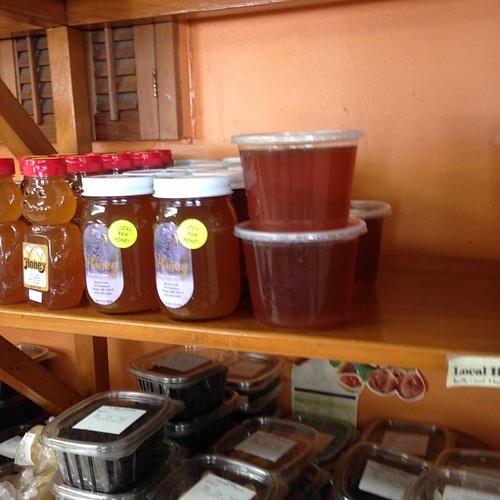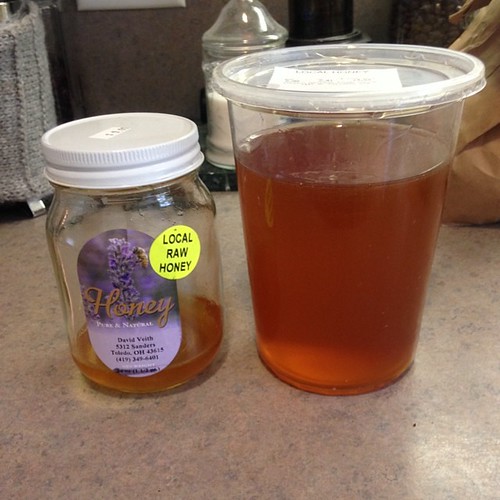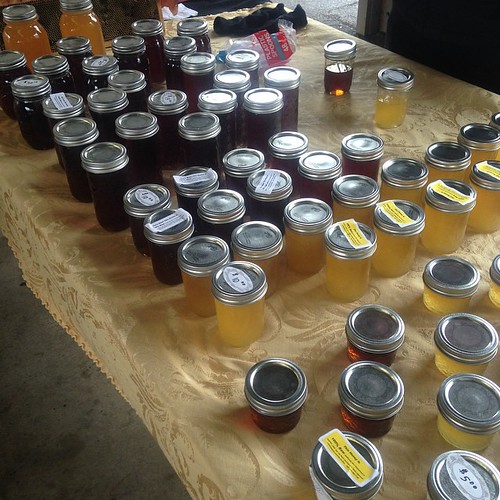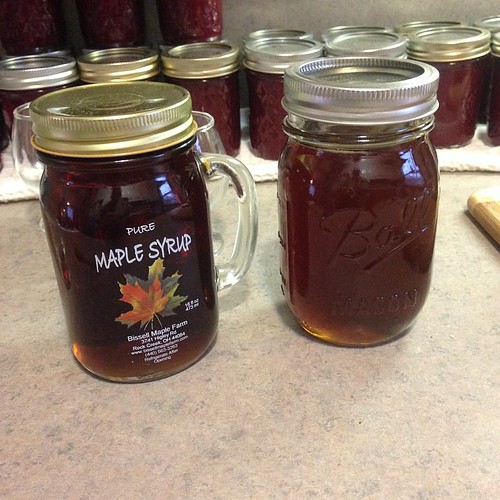Local honey
We use honey in many foods, such as in a cup of tea, a bowl of oatmeal, in yogurt, on toast, and to sweeten a tomato sauce. Honey is also our primary bottling sugar. We buy most of our honey from the Phoenix Earth Food Co-op, which sells at least two options, produced by local farmers who locate their beehives within and around Toledo.

The product sold in the glass jar is relatively new at the co-op. I mainly buy what's sold in the generic plastic containers, which, as of July 2014, sells for six dollars per pound. The color varies. Sometimes the honey nearly has the color of maple syrup.

In the fall of 2014, a new vendor from across the line in Michigan opened up shop at the Toledo farmers market. The farmer calls his business "Dee's Bees." He describes his honey as local honey that is 100% raw, unfiltered, non-pasteurized, and not heated.
The light colored honey comes from the spring when the bees forage on fruit trees or flowering trees and maybe clover. The dark honey comes from the late summer and early fall when the bees forage on goldenrod. I like both, but the dark version is amazing. November 2014 photo.

The Dee's Bee's goldenrod-based honey on the right is nearly as dark as the Ohio maple syrup that we bought at The Andersons. Both items were purchased on Dec 13, 2014. Deb's cranberry butter that she made that morning resides in the background.
